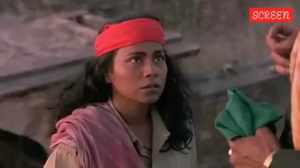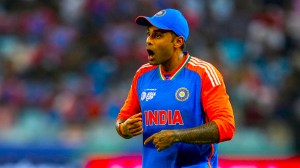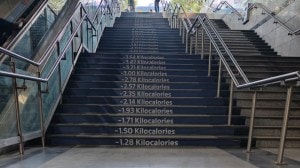The Bangladesh schools that Bill didn’t visit
MARCH 22: Like other countries in the region, Bangladesh has had its fair share of success in providing primary education to its citizens....

MARCH 22: Like other countries in the region, Bangladesh has had its fair share of success in providing primary education to its citizens. According to the estimates of the Bangladesh Institution of Development Studies, the gross enrolment rate, which shows the number of children enrolled at the primary level per 100 children of primary school age, has reached 106 per cent and the drop out rate has fallen from 60 per cent in the late 1980s to about 33 per cent in 1999.
The Directorate of Primary Education in Bangladesh reveals that by 1998 there were 79,722 primary level educational institutions in the country. Of these 37,710 were government primary schools, while the rest were either non-registered private primary schools, community schools, satellite schools, madrasas, kindergarten schools or a variety of NGO-run primary educational centres.
As a signatory to the World Conference on Education For All, Bangladesh has committed itself to impart basic education to at least 80 per cent of primary school aged children by the year 2000. Realising that it cannot do this alone, the Bangladesh government under a liberal state policy also encouraged non-formal primary education programmes run by NGOs. Among the well-known NGO providers of non-formal primary education are BRAC (the largest which enrolls 76.1 percent of the children that go to non-formal primary schools), followed by Proshika (5.6), Karitash (1.3), GSS (1.4), World Vision (0.1) among others.
By far the greatest success story in the NGO non-formal education sector is the BRAC Non-Formal Primary Education (NFPE) programme. With its innovative child- and community-centred features, the NFPE school model has been closely studied by a number of countries and is now being replicated and modified both within Bangladesh and around the world, including in Pakistan and Ethiopia. In Zambia, 43 primary schools, designed after the BRAC concept, have been set up under the Zambian Open Community Schools programme. Another 50 schools were opened in 1996. Schools called Village Schools have also been set up in Mali based on the BRAC model.
NFPE schools have earned worldwide acclaim. On his visit to Bangladesh, US President Bill Clinton was scheduled to vist a BRAC school but didn’t make it for security reasons.
BRAC’s NFPE programme was initiated in 1985, starting up with 22 experimental schools. BRAC’s non-formal primary schools now number 34,481 and cover over 1.1 million students. The objective of these schools is to provide basic education for eight to 10-year-olds who are not able to attend school or are dropouts from the formal system. The long-term objective is to encourage these students to join formal schools. The Basic Education for Older Children (BEOC) model is geared for children in the age group of 11-14 years of age, many of whom are poor and landless and have been denied education because of gender and poverty.
Parents who send their children to BRAC schools pay a nominal sum of Taka 5 a month. Materials and books are supplied by BRAC. In a typical BRAC school, children in their first and second year learn Bengali, mathematics, social studies and English, while in their third year they also get a grounding in religious education. The BEOC model schools also have courses on health, education and science. Around 70 per cent students of both the NFPE and BEOC schools are girls. NFPE schools have 33 students, while the BEOC schools admit 30. The NFPE school model originally set out to cover a curriculum equivalent to Class I through Class III in formal schools. This has now been expanded to a four-year programme which covers the curriculum for Class I to V. The BEOC schools follow a three-year cycle.
An essential feature of the NFPE schools is the close link maintained with parents. From programme design to management, BRAC encourages their participation. The school management committee consists of three parents, a community leader and the teacher (usually a married woman who is a local resident and who has done at least nine years of schooling). Parent meetings are held once a month in each school where issues such as the child’s progress, attendance and overall conduct are discussed. These meetings also provide a forum for the community and BRAC field staff to discuss relevant social issues such as child marriage and disease control.
Says Shuchi Karim, material developer, BRAC,“Among the reasons for the success of BRAC’s education programme is the flexible school timing. Classes I to III have a school day of three to three-and-a-half hours, while children in classes IV and V study for around four hours. The school timings are decided after consulting the parents since they need their children to help them with their daily work.”
The other factor cited by Karim is a participatory and life-related curriculum. The programme uses textbooks which are based on government competencies. These books are innovatively designed and developed by the organisation’s material developers. The social studies curriculum, for instance, covers subjects critical to child survival such as sanitation.There have been complaints that the programme suffers from a lack of quality control. Some months ago the Dhaka-based English daily, The Independent, quoted A.K.M. Mosharraf Hossain, an MP from Mymensingh, as saying that he had received several complaints from high school teachers that the academic performance of children from NGO schools was below standard.
But BRAC insiders have their side of the story to tell. Says a Mushtaque R.Chowdhury, director, Research Division, “If it is only academic qualifications that count then, yes, NFPE teachers are poorly qualified compared to their peers in government schools. Their initial straining is for 15 days compared to one year in government schools. But BRAC scores because it holds refresher training every month for its teachers. The refreshers play an important role in keeping their motivation up and training them in the finer nuances of the subject they will be teaching.”
While there has been substantial progress on indicators such as girl enrolment, Bangladesh still has a long way to go before it attains the goal of providing 80 percent basic education by the year 2000. As the Education Watch report of the Campaign for Popular Education (a coalition of over 400 NGOs involved in primary and non-formal education) points out: “Around 2.6 million children are leaving the primary school age each year with no or substandard education. The analysis has shown that the rate of progress over the last five years or so has been rather slow less than one percent per year. With this rate of progress, it is reckoned that the goal of 80 per cent basic education can be achieved only in the year 2082!”
Yet the battle is not lost. With the right government policies, firm political commitment and the active participation of educationists and social activists, there is the distinct possibility that Bangladesh may well emerge as one of the success stories in the region as far as basic education is concerned.



- 01
- 02
- 03
- 04
- 05




























